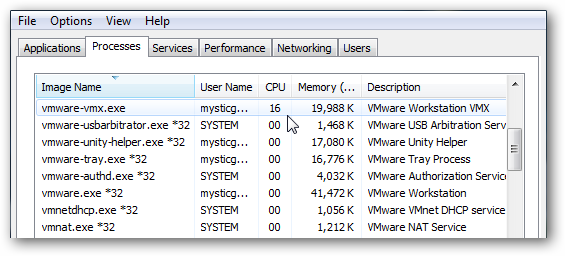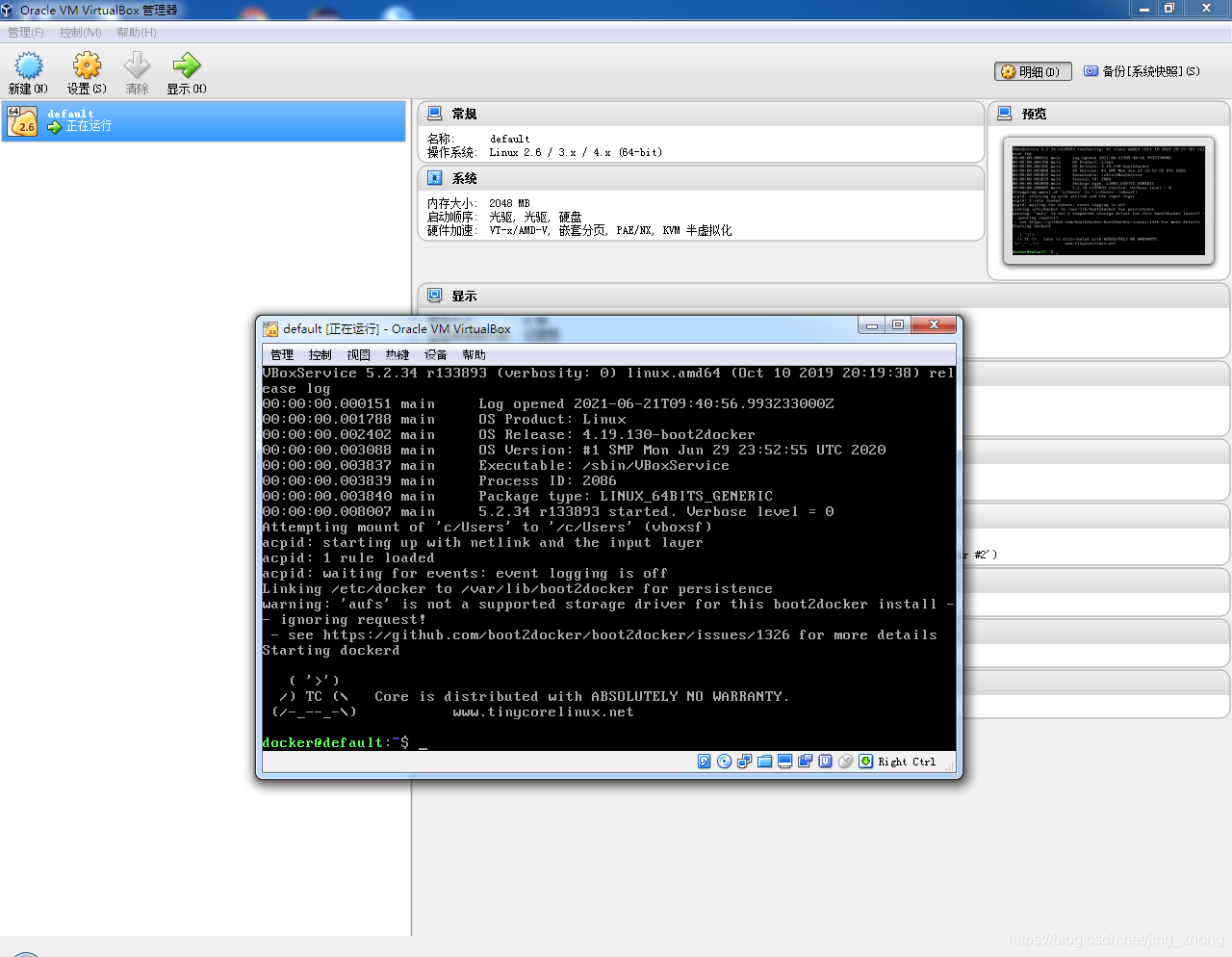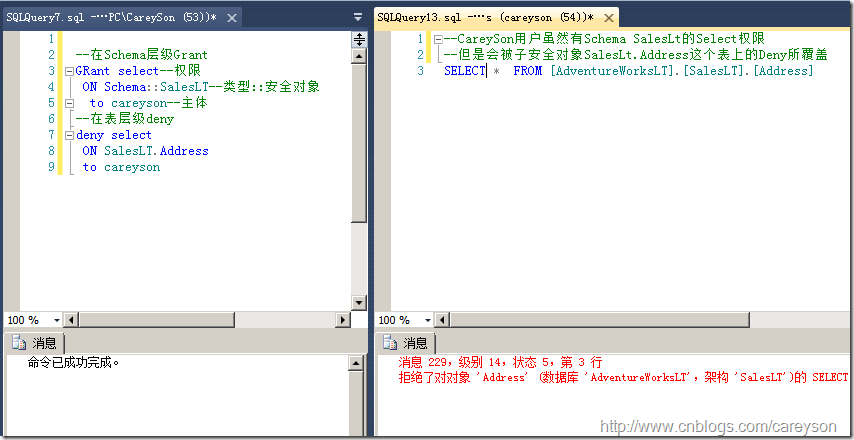If you’re a Windows Home Server enthusiast you probably want to test out the new version code named Vail. You might not have an extra box to test it on, so here we take a look at installing it on VMware Workstation.
如果您是Windows Home Server的发烧友,则可能需要测试名为Vail的新版本代码。 您可能没有额外的盒子可以对其进行测试,因此在这里我们看一下如何在VMware Workstation上安装它。
Getting Started
入门
You’ll need the following items to get started.
您需要以下各项才能开始。
- VMware Workstation with a valid license or you can use it free for a 30 day trial period 具有有效许可证的VMware Workstation,或者您可以免费使用30天的试用期
- WHS Vail Beta ISO WHS Vail Beta ISO
- Computer Capable of Hardware Virtualization 具有硬件虚拟化能力的计算机
- Enough Hard Drive space on the Host computer to create a 160GB virtual hard drive which is the minimum system requirements 主机上有足够的硬盘驱动器空间,可以创建160GB虚拟硬盘驱动器,这是最低系统要求
- At least 2GB of RAM or more on the Host computer – The minimum amount of RAM to allocate for Vail is 1GB主机上的RAM至少为2GB或更多–为Vail分配的RAM的最小数量为1GB
For this article we used a machine with a Core i3 processor and 6GB of RAM running Windows 7 Ultimate x64 and VMware Workstation 7.1.
在本文中,我们使用了一台具有Core i3处理器和6GB RAM的计算机,该计算机运行Windows 7 Ultimate x64和VMware Workstation 7.1。
Hardware Virtualization
硬件虚拟化
To start out you’ll need to make sure your machine is capable of Hardware Virtualization. If it isn’t, you might want to check through your BIOS settings to enable it. Also check for and install any BIOS updates that are available for your machine. An excellent utility to quickly find out if it’s capable of Hardware Virtualization is SecurAble. There is no installation needed…just download the file and run it.
首先,您需要确保您的计算机能够进行硬件虚拟化。 如果不是,您可能需要检查一下BIOS设置以启用它。 还要检查并安装适用于您的计算机的所有BIOS更新。 SecurAble是一个很好的实用工具,可以快速找出它是否可以进行硬件虚拟化。 无需安装…只需下载文件并运行即可。
![sshot-2010-07-23-[00-52-19] sshot-2010-07-23-[00-52-19]](https://img-blog.csdnimg.cn/img_convert/88de0ba9408b7f5b62542ae4d578dd0f.png)
Install VMware
安装VMware
If you don’t have it already, download and install VMware Workstation (link below). If you already have the free VMware Player installed, you’ll be prompted to uninstall that first. Don’t worry about losing any VMs that you created in Player as Workstation comes with a version of Player as well.
如果尚未安装,请下载并安装VMware Workstation(下面的链接)。 如果您已经安装了免费的VMware Player,将提示您首先将其卸载。 不要担心丢失在Workstation随附的Player版本中在Player中创建的任何VM。
![sshot-2010-07-22-[20-33-11] sshot-2010-07-22-[20-33-11]](https://img-blog.csdnimg.cn/img_convert/e2a724a2172745ec2f6523aec08ce0b7.png)
A restart is required to complete the uninstall of VMware Player.
需要重新启动才能完成VMware Player的卸载。
![sshot-2010-07-22-[20-36-22] sshot-2010-07-22-[20-36-22]](https://img-blog.csdnimg.cn/img_convert/550667d5faf3574f0aa51b4dacd48f3a.png)
When you get back from the restart or are just beginning the install, go through the wizard accepting the defaults of a Typical Install. You’ll also be asked to enter your license number during the process or continue with the free trial.
当您从重新启动中恢复或刚开始安装时,请通过向导接受典型安装的默认设置。 在此过程中,系统还会要求您输入您的许可证号或继续免费试用。
![sshot-2010-07-22-[20-44-07] sshot-2010-07-22-[20-44-07]](https://img-blog.csdnimg.cn/img_convert/2bb648d67f9b1dbdcb7a42e5bbf3f7c5.png)
Again a reboot will be required to finish the installation.
再次需要重新启动才能完成安装。
![sshot-2010-07-22-[20-47-20] sshot-2010-07-22-[20-47-20]](https://img-blog.csdnimg.cn/img_convert/801d0e8ae3564608df74ea2c4d7ad0e6.png)
Creating New Virtual Machine
创建新的虚拟机
Once it’s installed you’ll see the VMware Workstation icon in the Taskbar. Launch it from there and click on New Virtual Machine.
安装完成后,您将在任务栏中看到VMware Workstation图标。 从那里启动它,然后单击“新建虚拟机”。
![sshot-2010-07-22-[20-53-44] sshot-2010-07-22-[20-53-44]](https://img-blog.csdnimg.cn/img_convert/f69206d3975bfd810c08c40e2a67863b.png)
When the New Virtual Machine Wizard starts, click on Custom (advanced) configuration.
当“新建虚拟机向导”启动时,单击“自定义(高级)”配置。
![sshot-2010-07-22-[20-56-03] sshot-2010-07-22-[20-56-03]](https://img-blog.csdnimg.cn/img_convert/0dabef41997660b8ac86fc7ac1f41b98.png)
In the next step of the wizard just keep the defaults and select Next.
在向导的下一步中,只需保留默认值,然后选择“下一步”。
![sshot-2010-07-22-[20-57-18] sshot-2010-07-22-[20-57-18]](https://img-blog.csdnimg.cn/img_convert/0600d4ae9ad1c351c1e66ce205726c2f.png)
Now select I will install the operating system later. This will make the install process easier by configuring the correct VMware settings first and not have it do an unattended install.
现在选择“我稍后将安装操作系统” 。 通过首先配置正确的VMware设置,而不进行无人参与的安装,这将使安装过程更加容易。
![sshot-2010-07-22-[23-29-46] sshot-2010-07-22-[23-29-46]](https://img-blog.csdnimg.cn/img_convert/aeaa062b5625bc979c21fdc2145aaccc.png)
For the Guest Operating System select Windows Server 2008 x64.
对于来宾操作系统,选择Windows Server 2008 x64。
![sshot-2010-07-22-[23-30-20] sshot-2010-07-22-[23-30-20]](https://img-blog.csdnimg.cn/img_convert/7ecc412077eb8022fef3d3b3f94879a5.png)
Give your VM a name that makes sense. If you end up installing a lot of different VMs, giving them unique names helps keep them all straight.
给您的VM一个有意义的名称。 如果最终要安装许多不同的VM,则为它们提供唯一的名称有助于使它们保持一致。
![sshot-2010-07-22-[23-30-49] sshot-2010-07-22-[23-30-49]](https://img-blog.csdnimg.cn/img_convert/d1e50cf4dc27972e6ec71bbcd62df7a1.png)
For this article we didn’t change the processor settings, we kept them with the defaults. This is something you might want to experiment with later though.
对于本文,我们没有更改处理器设置,而是将其保留为默认设置。 不过,您稍后可能会想尝试一下。
![sshot-2010-07-22-[23-32-54] sshot-2010-07-22-[23-32-54]](https://img-blog.csdnimg.cn/img_convert/1dbbde426b244b0c88eef3f1367e9821.png)
Now decide the amount of memory you want to allocate for the Vail VM. Keep in mind it will be using the host computer memory, so if you don’t want big slow downs with other tasks while the VM is running, you can set it to the minimum requirement which is 1GB. On our system we have some memory to spare so we bumped it up to 2GB.
现在,确定要为Vail VM分配的内存量。 请记住,它将使用主机计算机的内存,因此,如果您不希望在VM运行时因其他任务而大幅度降低速度,可以将其设置为最低要求,即1GB。 在我们的系统上,我们有一些可用内存,因此我们将其增加到2GB。
![sshot-2010-07-22-[23-33-11] sshot-2010-07-22-[23-33-11]](https://img-blog.csdnimg.cn/img_convert/94d34a52082bbe140a318a5a87fa8cc2.png)
For the Network Type select Use bridged networking for best performance. This will give your Vail VM its own IP address and will act like a separate machine on your network.
对于网络类型,选择使用桥接网络以获得最佳性能。 这将为您的Vail VM提供其自己的IP地址,并且将在网络上像单独的计算机一样工作。
![sshot-2010-07-22-[23-33-47] sshot-2010-07-22-[23-33-47]](https://img-blog.csdnimg.cn/img_convert/1bb0cf5feee9f28ea6ebaf93aabed9a0.png)
For the SCSI Controller type you can just leave it with the default recommended LSI Logic SAS. Again you might want to experiment with these settings at another time, but for now you can leave it.
对于SCSI控制器类型,您只需将其保留为默认的建议LSI Logic SAS。 同样,您可能想在其他时间尝试这些设置,但是现在您可以保留它。
![sshot-2010-07-22-[23-34-32] sshot-2010-07-22-[23-34-32]](https://img-blog.csdnimg.cn/img_convert/e318b5431ce154c88e23b269fb4d19db.png)
Now you need to create a new virtual disk for Vail.
现在,您需要为Vail创建一个新的虚拟磁盘。
![sshot-2010-07-22-[23-35-05] sshot-2010-07-22-[23-35-05]](https://img-blog.csdnimg.cn/img_convert/6b40ef023e57e8a7cf11b37fe3d0ed59.png)
Select the disk type to be SCSI…
选择磁盘类型为SCSI…
![sshot-2010-07-22-[23-35-32] sshot-2010-07-22-[23-35-32]](https://img-blog.csdnimg.cn/img_convert/ed41156d22941eb2b1afada6cb126123.png)
Now you need to select the size of the virtual hard drive. The minimum requirement is 160GB, so you’ll want to make sure you have enough disk space on the Host computer.
现在,您需要选择虚拟硬盘驱动器的大小。 最低要求为160GB,因此您需要确保主机上有足够的磁盘空间。
![sshot-2010-07-22-[23-36-25] sshot-2010-07-22-[23-36-25]](https://img-blog.csdnimg.cn/img_convert/3d9e9944c686c7f8f3ee1be46d28bdc3.png)
You can then specify the disk file, we just left it as the default.
然后,您可以指定磁盘文件,我们只是将其保留为默认文件。
![sshot-2010-07-22-[23-36-56] sshot-2010-07-22-[23-36-56]](https://img-blog.csdnimg.cn/img_convert/1ce7c7548e94e5be93209b7bf30f246e.png)
You’ll get an overview of the settings you selected when creating the Server VM. Look it over and if something doesn’t look right you can go back at this point and make changes.
您将概述创建服务器VM时选择的设置。 查看一下,如果有什么不正确的地方,您可以返回此处进行更改。
![sshot-2010-07-22-[23-37-44] sshot-2010-07-22-[23-37-44]](https://img-blog.csdnimg.cn/img_convert/d26654e8b7284c070eec53defdb42e5f.png)
From the main Workstation screen, under Devices double-click CD/DVD so we can install the ISO image. Since Vail comes in ISO format, there is no need to burn it to disc for the VM. You might want to burn it at some point for installing it on an actual machine later.
在“工作站”主屏幕上的“设备”下,双击CD / DVD,以便我们可以安装ISO映像。 由于Vail是ISO格式,因此无需将其刻录到VM的光盘上。 您可能需要刻录它,以便稍后将其安装到实际计算机上。
![sshot-2010-07-22-[23-39-33] sshot-2010-07-22-[23-39-33]](https://img-blog.csdnimg.cn/img_convert/7541bfd1d8f5d2c6f8353a30fd51d71f.png)
Select Use ISO image file and browse to its location.
选择使用ISO映像文件,然后浏览到其位置。
![sshot-2010-07-23-[00-14-24] sshot-2010-07-23-[00-14-24]](https://img-blog.csdnimg.cn/img_convert/b9e61db0b31b4677422c2c3ba13ce395.png)
Now power on the machine to begin the install process of Vail.
现在打开机器电源,开始Vail的安装过程。
![sshot-2010-07-23-[00-15-06] sshot-2010-07-23-[00-15-06]](https://img-blog.csdnimg.cn/img_convert/49158c65e5c8961abd6b929a57cd4850.png)
Go through the installation as you normally would. Don’t worry if you haven’t installed it before, the process is pretty basic following the wizard. The VM will restart several times which is normal and the amount of time it takes will vary. On our machine it took around 30 minutes.
照常进行安装。 如果您之前没有安装过,请不要担心,该过程非常简单。 VM将重新启动几次,这是正常现象,并且所需的时间会有所不同。 在我们的机器上花费了大约30分钟。
![sshot-2010-07-23-[00-17-24] sshot-2010-07-23-[00-17-24]](https://img-blog.csdnimg.cn/img_convert/b6e8b6e2bf2ce4c8f24605bba2445635.png)
After the install process has completed click the I Finished Installing button.
安装过程完成后,单击“我完成安装”按钮。
![sshot-2010-07-23-[01-16-29] sshot-2010-07-23-[01-16-29]](https://img-blog.csdnimg.cn/img_convert/77651c6293df0db31feb0941adc78d4e.png)
During the installation process, it didn’t take up too many resources on our Core i3 desktop, but once you start using Vail, it will use the Host’s resources you allocated for it.
在安装过程中,Core i3桌面上并没有占用太多资源,但是一旦您开始使用Vail,它将使用您为其分配的主机资源。

Now that Vail is installed on VMware Workstation you can log in and start using it. At the Press CTRL+ALT+DELETE screen select VM \ Send Ctrl+Alt+Del from the toolbar.
现在,Vail已安装在VMware Workstation上,您可以登录并开始使用它。 在“按CTRL + ALT + DELETE”屏幕上,从工具栏中选择“ VM” \“发送Ctrl + Alt + Del”。
![sshot-2010-07-23-[03-52-06] sshot-2010-07-23-[03-52-06]](https://img-blog.csdnimg.cn/img_convert/2a3fcb4728683884a56a3b3bcf507600.png)
Now you can log into your new virtual Vail Server.
现在,您可以登录到新的虚拟Vail服务器。
![sshot-2010-07-23-[01-24-46] sshot-2010-07-23-[01-24-46]](https://img-blog.csdnimg.cn/img_convert/b5048ef77e9d1c706e404ebb67b4588d.png)
VMware Tools
VMware工具
Now you’ll want to install VMware Tools which will enhance the VM experience. From the toolbar go to VM \ Install VMware Tools.
现在,您需要安装VMware Tools,它将增强VM体验。 从工具栏转到VM \ Install VMware Tools。
![sshot-2010-07-23-[01-18-12] sshot-2010-07-23-[01-18-12]](https://img-blog.csdnimg.cn/img_convert/5c578e1d2c0626281640dfe83be59316.png)
When the AutoPlay screen comes up click on Run setup.exe to installed the tools.
当出现“自动播放”屏幕时,单击“运行setup.exe”以安装工具。
![sshot-2010-07-23-[01-19-17] sshot-2010-07-23-[01-19-17]](https://img-blog.csdnimg.cn/img_convert/fd270c77f4a0714d8a9aae62f6e9cb4b.png)
Now run through the VMware Tools wizard and install it accepting the defaults.
现在,通过VMware Tools向导运行并安装接受默认设置的向导。
![sshot-2010-07-23-[01-20-05] sshot-2010-07-23-[01-20-05]](https://img-blog.csdnimg.cn/img_convert/cb361b6a88e1ff5f647e3106eafd29d8.png)
Another restart will be required to complete the installation of VMware Tools.
将需要重新启动一次才能完成VMware Tools的安装。
![sshot-2010-07-23-[01-22-14] sshot-2010-07-23-[01-22-14]](https://img-blog.csdnimg.cn/img_convert/7f9d96ac4e79ec89e9de2c3189989c61.png)
There you go! You can now test out the beta version of Windows Home Server virtually. If you want to test out clients, you could create another virtual machine and connect it. You’ll also be able to RDP into the virtual server so you can test out the new features. If you already have WHS Version 1 Connecter software installed on the host machine, you won’t be able to install the Connecter Software.
你去! 现在,您可以虚拟测试Windows Home Server的beta版本。 如果要测试客户端,则可以创建另一个虚拟机并将其连接。 您还可以将RDP导入虚拟服务器,以便测试新功能。 如果您已经在主机上安装了WHS版本1连接器软件,则将无法安装连接器软件。
![sshot-2010-07-25-[04-03-53] sshot-2010-07-25-[04-03-53]](https://img-blog.csdnimg.cn/img_convert/cb2d513d78d12eacb29c5d458e5c816a.png)
VMware Player
VMware Player
Remember at the beginning of this article we mentioned that any VMs you had setup in the free VMware player will be fine? Well that is true provided the install goes through successfully without and errors. You can access VMware Player from the Start Menu \ All Programs \ VMware folder.
还记得本文开头提到的,在免费的VMware Player中设置的任何VM都可以吗? 如果安装成功且没有错误,那么这是正确的。 您可以从“开始”菜单\“所有程序” \“ VMware”文件夹访问VMware Player。
![sshot-2010-07-23-[03-19-19] sshot-2010-07-23-[03-19-19]](https://img-blog.csdnimg.cn/img_convert/296dcde4ee552757fa343c25bcaaa5bb.png)
On our tests, all of the VMs we had previously setup worked without any issues.
在我们的测试中,我们先前设置的所有VM都可以正常工作。
![sshot-2010-07-23-[02-52-39] sshot-2010-07-23-[02-52-39]](https://img-blog.csdnimg.cn/img_convert/21551b46829e66507657614609c4e26b.png)
Conclusion
结论
That is all there is to it! The process is fairly easy since everything is wizard driven. You just need to make sure to follow the steps in the right order and select the correct options. Now you can enjoy testing out Vail without worrying about having an extra machine to run it on. Remember that Vail is still in Beta and at this point, you definitely don’t want to get rid of Version 1 and replace it with Vail. If you don’t have a license for Workstation they do offer a 30 day free trial so you can at least play around with Vail for a month.
这就是全部! 由于所有操作都是由向导驱动的,因此该过程非常容易。 您只需要确保按照正确的顺序执行步骤,然后选择正确的选项即可。 现在,您可以享受测试Vail的乐趣,而不必担心需要额外的机器来运行它。 请记住,Vail仍处于Beta版,此时,您绝对不希望放弃Version 1,而将其替换为Vail。 如果您没有Workstation的许可证,他们会提供30天的免费试用期,因此您至少可以在Vail玩一个月。
If you do have an extra computer collecting dust and want to turn it into a Windows Home Server, check out our guide on how to install and setup WHS Version 1.
如果您确实有一台多余的计算机收集灰尘并将其变成Windows Home Server,请查看有关如何安装和设置WHS版本1的指南。
Download VMware Workstation – Registration Required
下载VMware Workstation –需要注册
Download WHS Code Named Vail from Microsoft Connect
从Microsoft Connect下载名为Vail的WHS代码
Download SecurAble
下载SecurAble
翻译自: https://www.howtogeek.com/howto/23275/how-to-install-windows-home-server-beta-vail-on-vmware-workstation/






